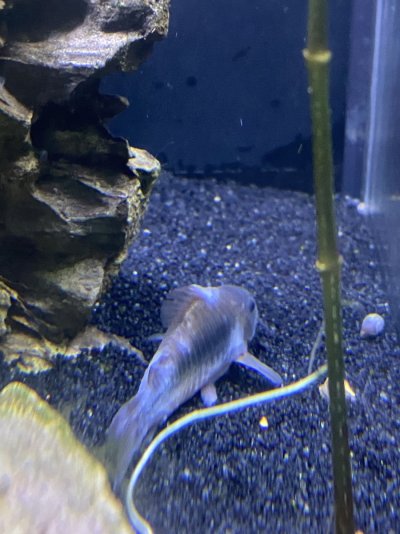I have two bronze corys that recently developed these white patches all over. The one shown in the picture has it the worst, where the other primarily has a patch behind its dorsal fin and some on its tail. This has been ongoing and getting worse for about 5 weeks now. I was out of town for a little over a week, and when I came home noticed things had gotten even worse. I do admit that my tank had some rather dirty spots, especially in the back of the tank where they like to hang out. I have since removed all rocks/trees/objects to do perform a very rigorous cleaning hoping that helps with their recovery.
I have tried one methylene blue dip but didn't notice any positive changes from it. I had them in a hospital tank for 3 days dosed with Kanaplex, but I began getting worried as they started fading in color and becoming much more pale so I removed them and put them back into my main tank. This was my first attempt at a hospital tank (I had a heater and a sponge filter) so I was a bit nervous and unsure of how to keep them healthy in it.
Their behavior hasn't changed all that much overall and they still eat no problem. I was initially concerned it was columnaris, but they have vastly outsurvived it's quick "cycle" from what I've been reading. I then thought it might be saprolegnia, but I was reading that the methylene blue should have taken care of this (and turned it blue as a result) so now I'm not sure how to help these guys.

I have tried one methylene blue dip but didn't notice any positive changes from it. I had them in a hospital tank for 3 days dosed with Kanaplex, but I began getting worried as they started fading in color and becoming much more pale so I removed them and put them back into my main tank. This was my first attempt at a hospital tank (I had a heater and a sponge filter) so I was a bit nervous and unsure of how to keep them healthy in it.
Their behavior hasn't changed all that much overall and they still eat no problem. I was initially concerned it was columnaris, but they have vastly outsurvived it's quick "cycle" from what I've been reading. I then thought it might be saprolegnia, but I was reading that the methylene blue should have taken care of this (and turned it blue as a result) so now I'm not sure how to help these guys.













